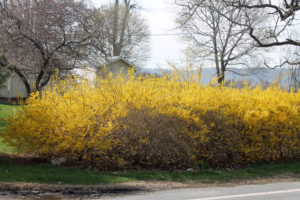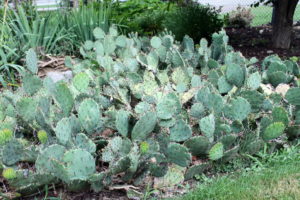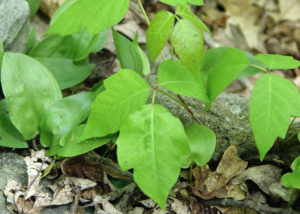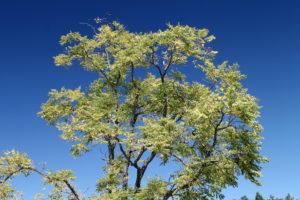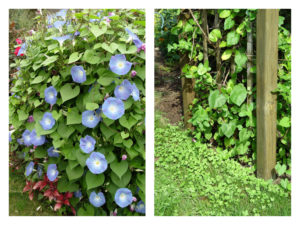George’s Plant-Enemies List
I like plants… but not all of them.
Some plants have sufficiently repulsed me enough to earn a spot on my “plant enemies list.”
A few are flat-out weeds. Others are ones that gave me trouble or rubbed me the wrong way for some reason.
Here are 10 I won’t be inviting into my yard anytime soon… and ones you might want to think twice about before adding to your planting plans:
Forsythia
Some people love this golden shrub because it blooms so cheerfully so early in the season (albeit for only two weeks).
Me? I think of forsythia as the shrub that hurt my back when I was trying to dig the gangly monster out of the front corner of my house 35 years ago. My back hasn’t been right since.
Ribbongrass
A friend gave me a division of this variegated grass before I knew about its aggressive spreading.
I planted it in a perennial garden, and it promptly grew between, through, and over everything. I had to dig up the whole garden to get rid of the incessant runners of this wretched beauty.
Prickly pear cactus
Woe the gardener who tries to mulch or weed around this low, spreading, winter-hardy, U.S. native perennial.
The yellow flowers are nice, but the needles should be regulated as a weapon. And it’s not just the ones on the pads you have to worry about. The insidious needles drop and stab you from the ground for years after you remove this botanical terrorist.
Pyracantha (a.k.a. “firethorn”)
If prickly pear cactus hurts, pyracantha is deadly. This vertical shrub has thorns that are stiff, about an inch long, and frighteningly sharp.
Anything short of full-body armor, and you can figure on getting pierced when trying to prune one of these. Especially guard your eyes!
Poison ivy
This whole list could be made up of weeds, but I single out poison ivy because it makes so many people so miserable.
This weed is everywhere, and the skin rash it causes is painful. Breathing in burning vapors of it can even kill.
Like prickly pear cactus, poison ivy is an insidious aggressor that can do damage even after it’s dead or dormant. The allergenic oil can stay active for years.
Barberry
Here’s another plant that bites back. Barberry is hard to kill and attractive in its maroon foliage, but its needles draw blood, most varieties of it are invasive, and it’s apparently a tick magnet as well.
No thanks.
Honeylocust
I’ve seen way too many surface roots of this tree kill off lawns and nearby garden beds. The real kicker for me was when I saw the honeylocusts planted in the parking-lot boxes at the former County Market Nursery penetrate and push up the asphalt, like zombies rising from the grave.
I won’t even get into the thorns, the never-ending messy leaf drop, and bug problems that plague honeylocust.
Norway and silver maples
The maple family has a lot of great and showy members. These two are not among them.
Both produce big, surface, troublesome roots for very little fall color in return. Those “whirlybird” seed pods pop up unwanted seedlings everywhere, too.
Wintercreeper euonymus
I thought this trailer was an OK evergreen groundcover, similar to vinca. Not great but not evil.
Then I saw neglected plantings of it growing 40 feet up trees. It can smother trees as well as the “big boys” of poison ivy and wild grapes.
It seeds around, too.
Morning glory
I hate to add this flowering annual vine here because the blooms are so beautiful – especially the blue ones.
However, the plants seed so wildly and last so long once in the ground that they rival some of our worst weeds for thugability.
I was still yanking morning glory seedlings out of my lawn and garden beds 10 years after naively planting them.
Have some non-favorites of your own? You’re welcome to add them in the comments section.








